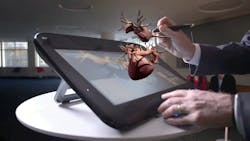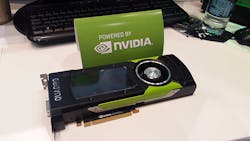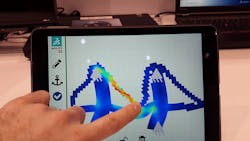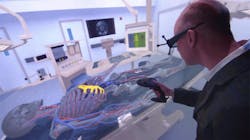Observations from “Science in the Age of Experience”
Though many technologies are involved in advancing the world, one particular technology—computer-aided design seems responsible for more companies being formed; faster and more streamlined production; and many other features some engineers may not even know about yet. CAD has certainly come a long way from those 2D monochromatic screens. By licensing out such technology, companies like Dassault Systèmes open the door to enhanced solutions for improving manufacturing and testing, and helping people live longer, healthier lives.
On that front, Dassault Systèmes launched the Additive Manufacturing Symposium & Hackathon, followed by the Science in the Age of Experience event. The Additive Manufacturing Symposium & Hackathon gathered together speakers from NASA, top universities, and companies to talk about all things additive manufacturing (AM). The Hackathon let registered participants use 3DEXPERIENCE roles on AM available from Dassault Systèmes to overcome the design and manufacturing challenges. Software for functional generative design, process build setup, simulation, and topology optimization was available on Hackathon laptops.
I was fortunate enough to attend this event, and got to speak with some of the companies formed around Dassault Systèmes’ technology. A lot of the simulation offered streamlined testing.
Greg Thorwald of Quest Integrity Group reminded me what a J-integral was. Quest Integrity Group uses CAD and simulation to measure crack propagation. Large pieces of equipment may take a long time to produce, and if a crack forms on these parts, management needs to know if the part is able to function with the crack or how long it can safely function until a new part is needed. Thorwald uses software to predict fatigue and crack propagation.
Another company that surprised me was NVIDIA. Oftentimes, CAD programs may need more powerful computers to render tests, run simulations, and perform animations. Companies may not want to have to pay for a new software license and computers, so NVIDIA simply updated the video card.
The NVIDIA Quadro GP100, powered by Pascal GPU architecture, is essentially a computer right on the video card. It has been so popular that NVIDIA and other companies like AMD are upgrading to faster chips with more cores to handle the growth in simulation, artificial intelligence, and even the processing needed in self-driving cars. While the video-card upgrade was a great solution for processing speeds and bandwidth challenges, not all the booths at the event were work-related.
One booth presented an app for kids to show them how CAD works, in a general sense. A simple drawing program lets users make stickmen, bridges, or anything you can imagine. Once drawn, users can drag a line in any direction and see how the resulting stress will interact with the drawing. Users can even drag and release a line to see the structure bend and flex, with the resulting stresses displayed in the changing colors of the lines. However, it was the booth on the other side of the wall from the apps that impressed me the most.
Understanding chemical interaction and material properties of living tissues, doctors are able to use CAD software to see how different drugs will affect the body. Experts at the event even said they are looking at creating virtual patients to streamline FDA approval. Dassault has already created a virtual heart. This means it could be possible to do an MRI of a patient’s heart and conduct tests on how that specific heart will react to drugs and medical devices. The Living Heart Project brings (at least) three major benefits to the table:
1. It helps engineers design the next new medical devices.
2. It helps doctors understand how the human body works.
3. It will be a tool doctor used to determine what the optimal therapy is for each person.
Understanding the chemistry also means users can see how a body might respond to the material used in a stent, valve, or drug. Simula software is able to determine the optimal amount of prescription needed, or material demanded, of a part. However, it’s not all chemistry.
For example, a stent is like a spring that is inserted into a heart valve to keep it open. While the material is important, if the mechanical energy of the spring isn’t correct, it can have dire consequences. If the stent has too little outward pressure, it might dislodge; too much and it could damage the tissue.
With the MRI and tissue material property data, a simulation can be run on the stent to see how much stress it will exert. Endurance tests can even be run to see how the medical device will perform over time.
Many companies are performing simulations and exploiting CAD technology, but seeing the booths and examples at the Dassault event put it all into prospective. While CAD can be used to design, test, and streamline manufacturing, the many roles it has assumed could not have been imagined when engineers were drafting in original CAD programs in the ’80s and ’90s. With the growing popularity of the Internet of Things and advances in this technology, perhaps in another 20 years of CAD development, an MRI will be streamlined to a wearable drug-dispensing unit, a robotic surgeon, and 3D printer with bio-material able to print parts in living tissue.




